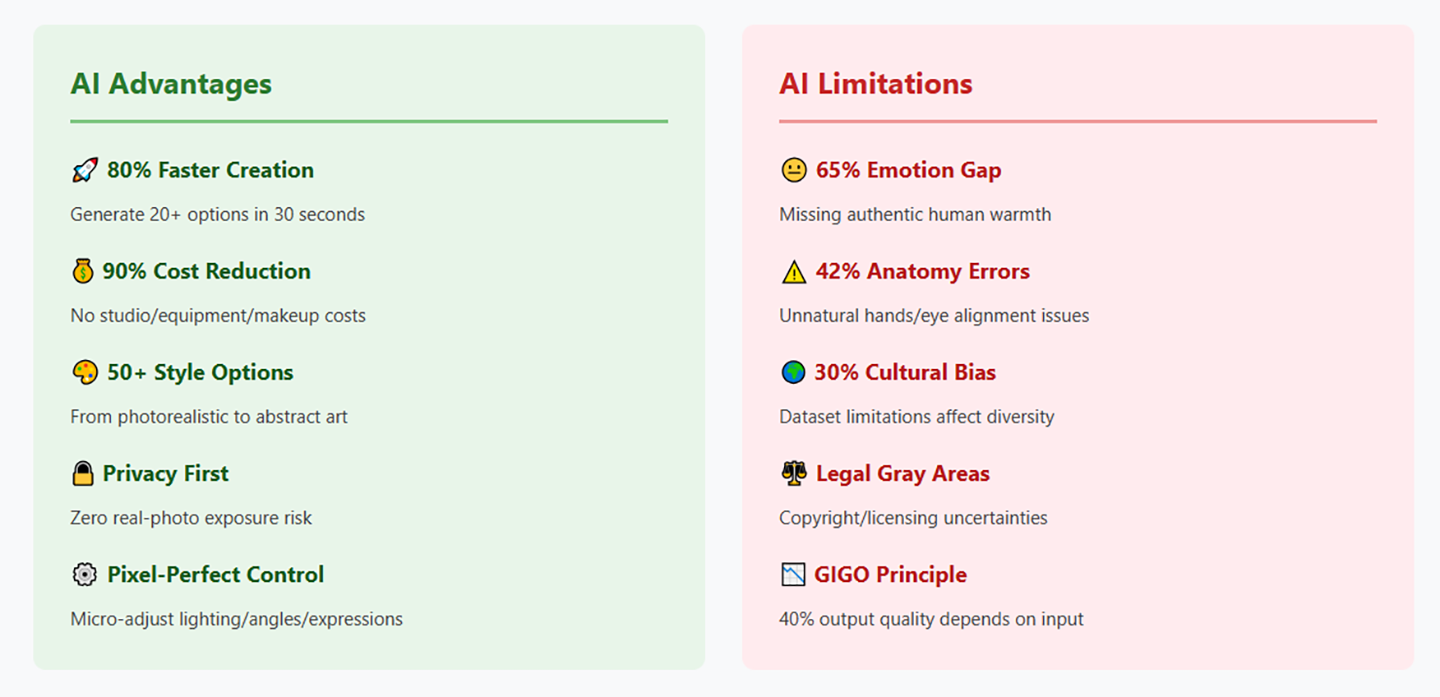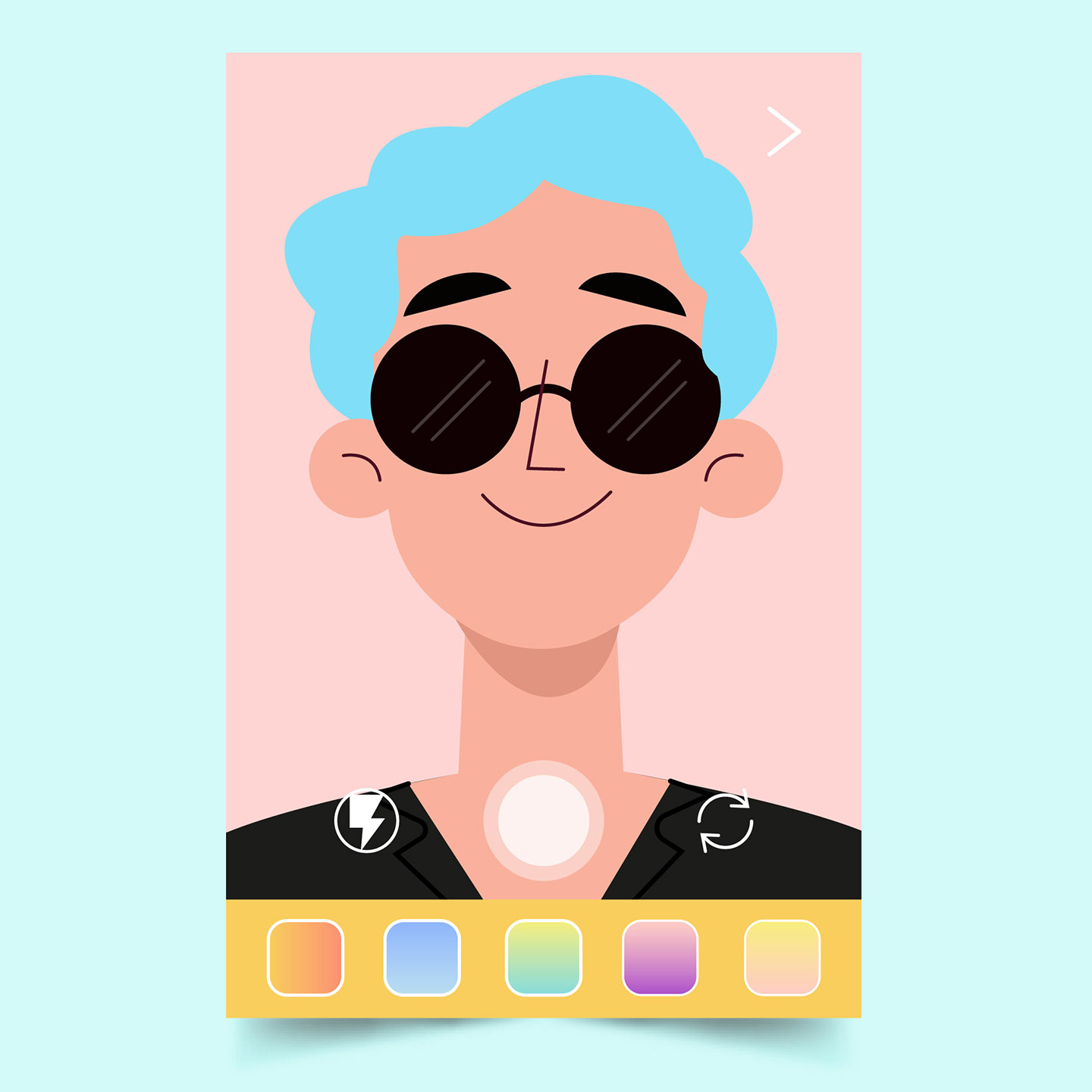In the ever-expanding world of artificial intelligence, one niche application that has attracted massive attention is the AI Profile Picture Generator. From humble beginnings as experimental algorithms to today's sophisticated, photorealistic AI-generated profile pictures employing cutting-edge neural networks, this technology continues to reshape how we represent ourselves digitally. But what exactly has been the evolution of AI Profile Picture Generators? How do these AI generated profile pictures compare to traditional methods? What impact do they have on industries, and what ethical challenges do they pose? Most importantly, how can we, as developers, users, and stakeholders in AI’s future, responsibly harness this technology? This article will explore these questions and more with thorough analysis, tech explanations, and real-world examples.

What Is the Evolution of AI Profile Picture Generators? How Did We Get Here?
To understand the current state of AI Profile Picture Generators, it helps to look back at their evolution—highlighting representative AI products, key milestones, and the core technologies enabling modern capabilities.
Early Days: From Basic Algorithms to Initial AI Experiments
The journey dates back decades before the AI term was mainstream. The 1960s saw the creation of rudimentary algorithms for computer graphics—such as Ivan Sutherland's Sketchpad in 1963—which laid the mathematical groundwork for digital imagery. However, these early experiments produced primitive, geometric visuals, far from the realistic profiles we seek today.
In the 1970s, British artist Harold Cohen developed "Aaron," a pioneering computer program that autonomously generated artwork, marking one of the first AI-based image generators. Though not designed for profile pictures specifically, Aaron embodied how AI might assist in visual creation.
Breakthrough with Neural Networks and GANs
The 1980s and 1990s introduced neural networks, which gradually improved machines’ capacity to interpret and generate visual data. Convolutional neural networks (CNNs), first gaining prominence with AlexNet in 2012, enabled machines to recognize and understand image features with unprecedented accuracy—a foundation stone for profile picture generation.
The big leap arrived in 2014 with the invention of Generative Adversarial Networks (GANs) by Ian Goodfellow et al.. GANs pit a generator model against a discriminator, forcing the generator to create increasingly realistic images to fool the discriminator. Early GANs could produce simple faces but were limited by resolution and detail.
Through iterative improvements (like DCGAN, Progressive GAN, and ultimately StyleGAN from 2018), AI Profile Picture Generators began producing high-resolution, detailed images with user-controlled attributes—such as age, expression, or hairstyle—transforming the technology from experimental to commercially viable.
Modern Era: Diffusion Models and Specialized AI
From 2023 onward, diffusion models have emerged as powerful successors or complements to GANs. These models iteratively add and remove noise to generate highly realistic images from textual prompts. Platforms like Midjourney, DALL-E 3, and Stable Diffusion XL have pushed photorealism, accuracy, and customization to new heights.
Now, AI Profile Picture Generators can create diverse, anatomically precise, and stylistically varied portraits by leveraging these advanced models embedded in professional tools or accessible web platforms.
What Are the Advantages and Limitations of AI Generated Profile Pictures Compared to Traditional Methods?
Recognizing the strengths and weaknesses of AI generated profile pictures helps us gauge where human expertise remains essential and where AI shines.
Advantages: Why Are AI Profile Picture Generators Sometimes Better Than Human Photographers?
Speed and Convenience: AI can generate multiple profile pictures in seconds, bypassing the logistical hassles of photography sessions.
Cost Efficiency: No need for professional equipment, makeup, or studio time, making it accessible to small businesses and individuals on tight budgets.
Customization and Control: Users can tweak minute details easily, such as background, lighting, or facial expression, often impossible or costly to achieve consistently in traditional photography.
Diversity of Styles: AI can mimic various artistic styles or produce hyper-realistic images, providing profile pictures that align with personal branding or niche communities.
Privacy Preservation: For those reluctant to share real photos online, AI generated pictures offer an alternative persona without compromising privacy.
Limitations: Where Do AI Generated Pictures Fall Short?
Lack of Genuine Human Nuance: AI might struggle to reproduce subtle emotional expressions or idiosyncrasies that make personal images feel authentic.
Potential for Inaccuracy: Sometimes AI generates unnatural anatomical features or unrealistic poses, requiring human intervention for correction.
Current Dataset Biases: AI models trained on limited or skewed datasets may produce less inclusive or stereotype-reinforcing images.
Ethical and Legal Uncertainties: Issues like copyright or misuse of likeness can overshadow AI-generated images.
Dependence on Input Quality: Poor prompts or low-quality input images often yield unsatisfactory outputs, which may frustrate novice users.

How Does AI Profile Picture Generation Impact Various Industries? What Are the Positive and Negative Effects?
AI Profile Picture Generators influence a range of sectors, challenging traditional workflows while creating novel opportunities.
Positive Impacts
Marketing and Branding: Small enterprises and content creators gain affordable, high-quality visuals to strengthen online presence.
Gaming and Virtual Worlds: AI avatars enhance personalization in metaverse platforms.
Social Media and Dating Apps: Users enjoy fresh and diverse profile images tailored to desired impressions.
Entertainment and Media Production: Streamlined visuals accelerate pre-production and concept art.
Negative Impacts
Professional Photography: The demand for traditional portrait sessions may wane, potentially reducing income for photographers.
Graphics and Design Jobs: Routine image creation tasks could be automated, pressuring entry-level designers.
Image Authenticity Concerns: Proliferation of synthetic images may harm trust in social media or professional networks.
Early Solutions for Threatened Sectors
Upskilling Photographers: Incorporate AI tools into photography workflows for hybrid creativity.
Focus on Experiential Services: Emphasize personalized, in-studio experiences that AI can’t replace.
Certification and Authenticity Labels: Develop standards distinguishing AI-generated from real photographs to maintain trust.
These strategies lay the groundwork for ethical and practical integration of AI tools into existing industries.
What Ethical Issues Surround AI Profile Picture Generators? Why Do They Matter?
As AI generated profile pictures become widespread, several pressing ethical concerns arise:
Copyright Ownership: Who owns AI-created images, especially when trained on millions of copyrighted photos without explicit consent? This ambiguity risks legal disputes and undermines creators’ rights.
Information Security and Privacy: Malicious actors could use AI to create fake profile pictures for scams, deepfakes, or identity theft, jeopardizing trust in digital identities.
Plagiarism and Originality: AI might replicate stylistic elements from real artists, raising questions about creativity versus copying.
Bias and Representation: Models trained on non-diverse datasets may propagate stereotypes or exclude marginalized groups.
Consent and Usage Transparency: Whether users truly understand how their data or images are used in training or generation processes affects ethical standing.
These issues carry serious consequences including loss of livelihood, legal complications, social distrust, and cultural harm.
How Can We Use AI Profile Picture Generators Responsibly? What Practical Steps Can Industries and Users Take?
Balancing benefits and risks requires thoughtful approaches:
For Impacted Industries: Blend AI tools to augment rather than replace human jobs; adopt clear ethical guidelines and provide retraining programs.
For Users: Use reputable platforms that disclose data usage and protect user privacy.
For Developers: Incorporate fairness audits, bias mitigation, and watermarking to mark AI-generated content.
Regulatory Compliance: Follow and help shape regulations—like copyright law updates and AI transparency standards—to foster safe AI deployment.
Education and Awareness: Promote literacy about AI capabilities and risks among consumers and creators.
Collectively, these approaches can help us harness AI generated profile pictures’ power while minimizing ethical pitfalls.

FAQs
Q: Can AI-generated profile pictures replace traditional photography entirely?
Not yet. While AI excels in speed and customization, it lacks the genuine human nuance and personal touch of professional shoots.
Q: What core technologies enable modern AI profile picture generation?
Primarily Generative Adversarial Networks (GANs) and diffusion models form the backbone of today’s AI image generators.
Q: Are AI-generated profile pictures safe to use as online avatars?
Generally yes, but users should choose trustworthy platforms and be aware of privacy and authenticity concerns.
Q: How can AI generated images contribute to bias?
If trained on limited data, AI models might reinforce stereotypes or exclude certain demographics, necessitating diverse datasets and fairness checks.
Conclusion
The AI Profile Picture Generator stands as a remarkable testament to AI's transformative power—morphing simple concepts of profile photos into versatile, AI generated profile pictures that serve millions. Their evolution from early experiments in the 60s and 70s, through GAN revolutions, to advanced diffusion techniques showcases the relentless march of innovation.
While these technologies simplify and enhance image creation with speed, cost-efficiency, and creative freedom, they also present serious ethical, legal, and practical challenges. Artificial intelligence invites us not only to celebrate new capabilities but also to critically examine implications for authenticity, employment, and social responsibility.
By combining technical rigor, ethical awareness, and proactive industry strategies, we can ensure AI Profile Picture Generators are a boon—not a bane—to our digital lives and creative futures. Embracing these tools with eyes wide open lets us unlock AI’s promise while safeguarding what makes us uniquely human.
 Submit Your AI Tool For FREE!Showcase Your Innovation To Thousands Of AI Enthusiasts!
Submit Your AI Tool For FREE!Showcase Your Innovation To Thousands Of AI Enthusiasts! Submit Your AI Tool For FREE!Showcase Your Innovation To Thousands Of AI Enthusiasts!
Submit Your AI Tool For FREE!Showcase Your Innovation To Thousands Of AI Enthusiasts! Submit Your AI Tool For FREE!Showcase Your Innovation To Thousands Of AI Enthusiasts!
Submit Your AI Tool For FREE!Showcase Your Innovation To Thousands Of AI Enthusiasts! Submit Your AI Tool For FREE!Showcase Your Innovation To Thousands Of AI Enthusiasts!
Submit Your AI Tool For FREE!Showcase Your Innovation To Thousands Of AI Enthusiasts! Submit Your AI Tool For FREE!Showcase Your Innovation To Thousands Of AI Enthusiasts!
Submit Your AI Tool For FREE!Showcase Your Innovation To Thousands Of AI Enthusiasts!






No comments yet. Be the first to comment!